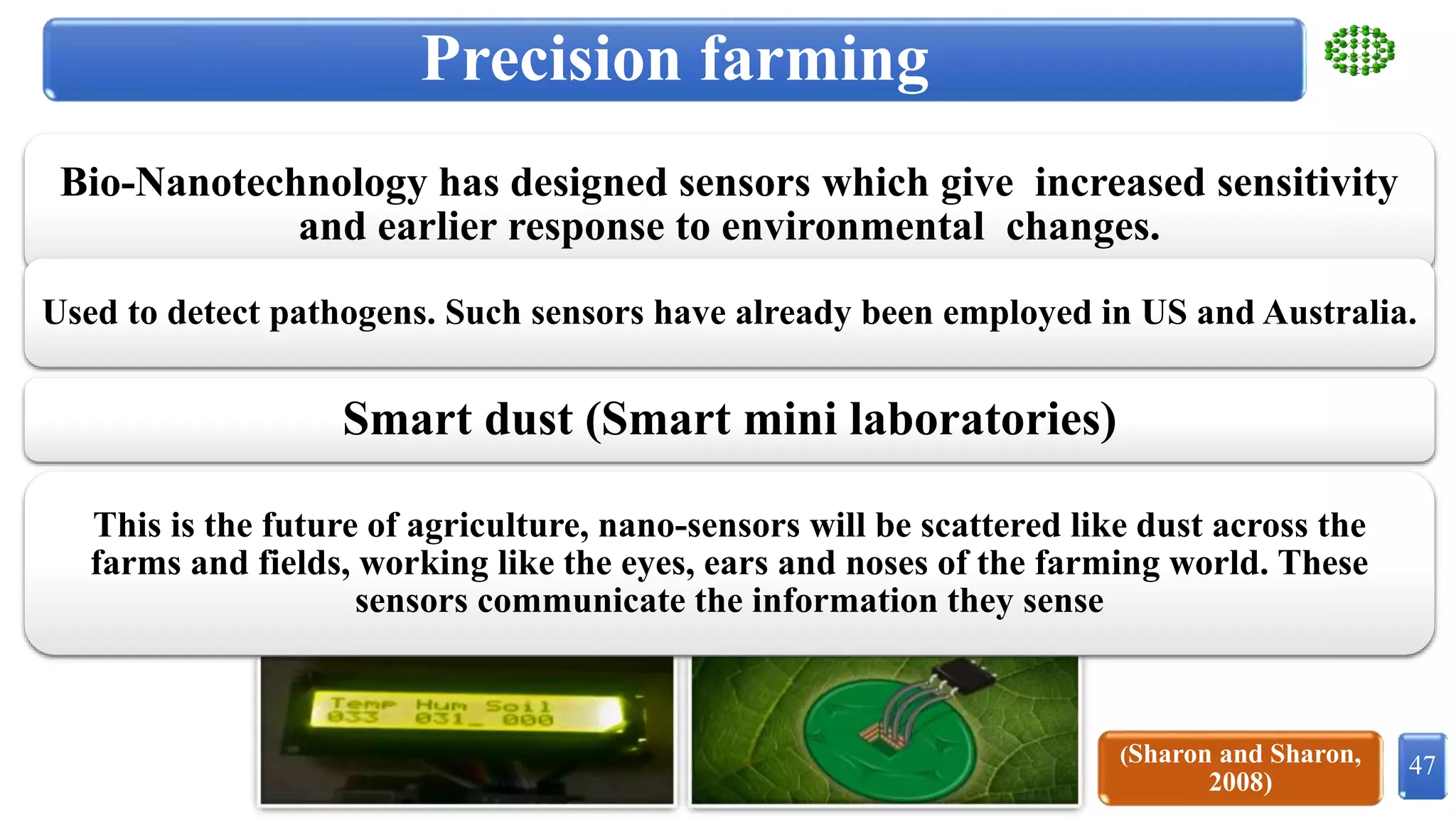Nanotechnology and its Applications in Agriculture was the topic of the seminar. The summary discusses:
1. Nanotechnology involves manipulating matter at the nanoscale of 1-100 nm. It can be used to create new materials and products with potential to change society.
2. Applications of nanotechnology in agriculture include crop improvement through faster growth, disease resistance, and gene regulation. It can also aid precision agriculture, soil management, pest and disease control, and water management.
3. Nanofertilizers, nanopesticides, and other nanoproducts offer benefits like increased nutrient use efficiency, targeted delivery, and reduced application needs compared to conventional methods.




































































